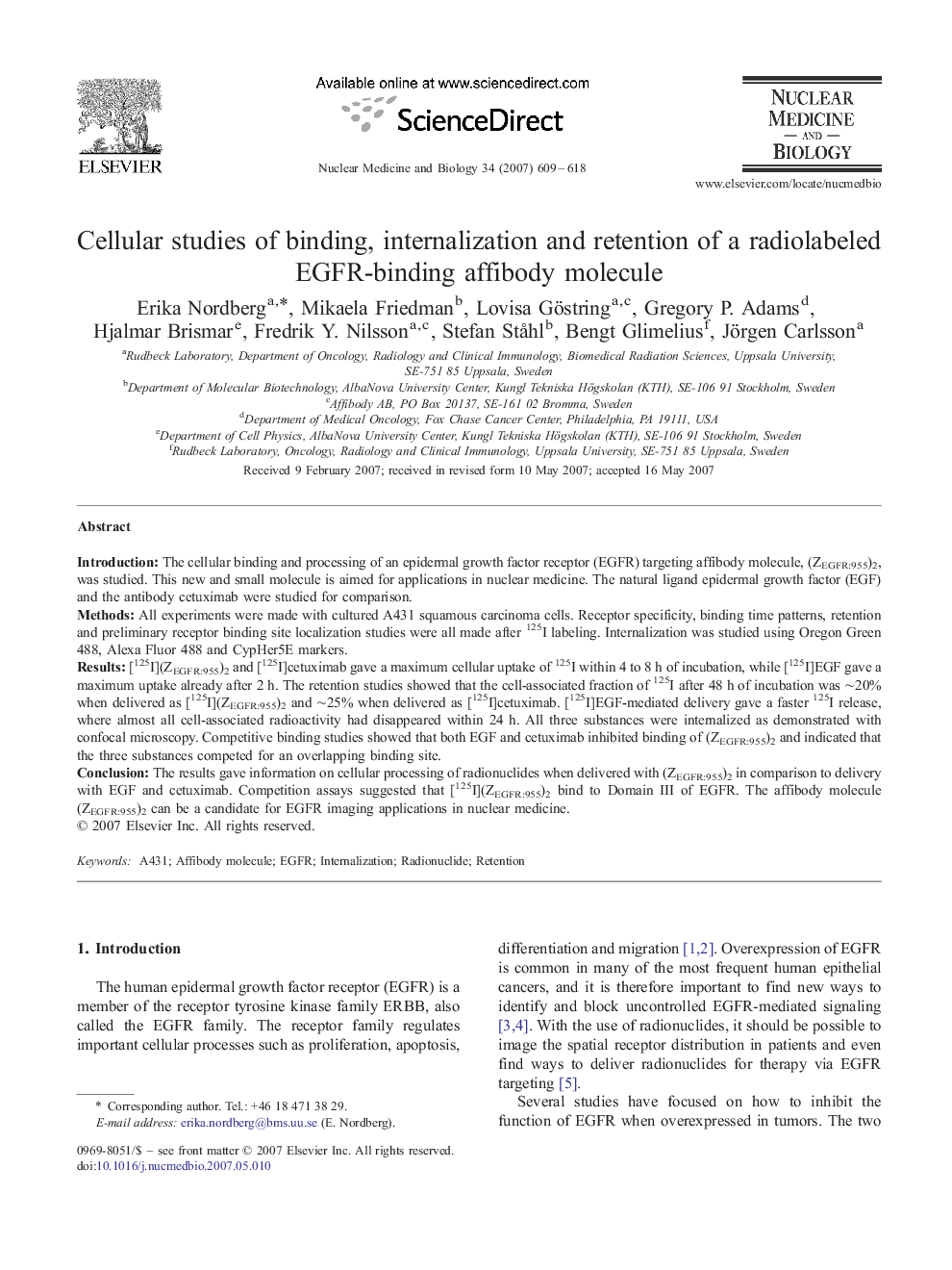| Article ID | Journal | Published Year | Pages | File Type |
|---|---|---|---|---|
| 2154724 | Nuclear Medicine and Biology | 2007 | 10 Pages |
IntroductionThe cellular binding and processing of an epidermal growth factor receptor (EGFR) targeting affibody molecule, (ZEGFR:955)2, was studied. This new and small molecule is aimed for applications in nuclear medicine. The natural ligand epidermal growth factor (EGF) and the antibody cetuximab were studied for comparison.MethodsAll experiments were made with cultured A431 squamous carcinoma cells. Receptor specificity, binding time patterns, retention and preliminary receptor binding site localization studies were all made after 125I labeling. Internalization was studied using Oregon Green 488, Alexa Fluor 488 and CypHer5E markers.Results[125I](ZEGFR:955)2 and [125I]cetuximab gave a maximum cellular uptake of 125I within 4 to 8 h of incubation, while [125I]EGF gave a maximum uptake already after 2 h. The retention studies showed that the cell-associated fraction of 125I after 48 h of incubation was ∼20% when delivered as [125I](ZEGFR:955)2 and ∼25% when delivered as [125I]cetuximab. [125I]EGF-mediated delivery gave a faster 125I release, where almost all cell-associated radioactivity had disappeared within 24 h. All three substances were internalized as demonstrated with confocal microscopy. Competitive binding studies showed that both EGF and cetuximab inhibited binding of (ZEGFR:955)2 and indicated that the three substances competed for an overlapping binding site.ConclusionThe results gave information on cellular processing of radionuclides when delivered with (ZEGFR:955)2 in comparison to delivery with EGF and cetuximab. Competition assays suggested that [125I](ZEGFR:955)2 bind to Domain III of EGFR. The affibody molecule (ZEGFR:955)2 can be a candidate for EGFR imaging applications in nuclear medicine.
